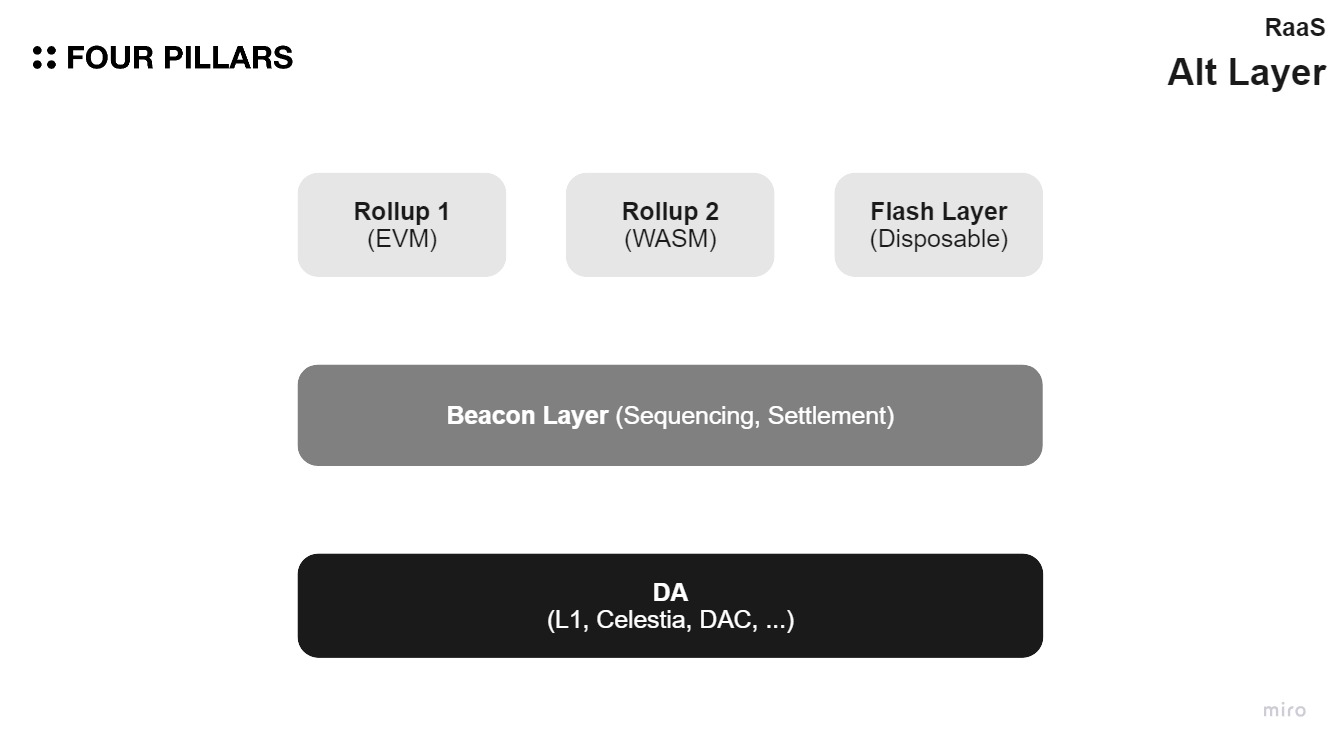Alt Layer
Key Takeaways
- AltLayer allows for the easy deployment of rollup networks without writing code.
- AltLayer has a Beacon Layer between an execution layer and a DA layer to facilitate shared sequencing, interoperability, etc.
- A key feature of AltLayer is the Flash Layer, which is a rollup network that can spin up quickly according to demand and is disposable later. It is suitable for events like NFT minting and event ticketing, which experience a large volume of traffic in a short period of time.
1. Overview

AltLayer is a RaaS project that allows for the easy deployment of rollup networks without writing code. One of its main features is creating a Flash Layer, a rollup network that can be used temporarily and disposable when no longer needed. AltLayer's Flash Layer could be beneficial for events like NFT minting that occur in a short amount of time and can consume significant gas fees on the Ethereum network.
2. Execution
AltLayer launches rollup networks based on the Substrate SDK, with EVM and WASM as the execution environments.
Users' transactions are sequenced in the Beacon Layer, which is an intermediate layer between the execution layer and the DA layer. To become a Sequencer, a certain amount of tokens must be staked, and participation in the sequencing process is based on the VRF and the amount of staked tokens. Ethereum network validators can also participate in the sequencing of the Flash Layer through EigenLayer.
3. Settlement
Since AltLayer only supports optimistic rollup currently, the settlement is processed via fraud proof. Notable features of AltLayer include implementing the fraud proof system, and anyone, not just whitelisted participants, can participate in the challenge process. AltLayer uses the bisection protocol in its fraud proof system. AltLayer can use a variety of networks as the settlement layer, including Ethereum, Avalanche, and Arbitrum.
AltLayer provides three types of transaction finality:
- Execution-level Finalization (Tier 1): Decentralized sequencers in the Beacon Layer collect users' transactions into batches.
- Verification-level Finalization (Tier 2): Basically, sequencers submit the batch and old/new state roots to L1, and AltLayer introduces an additional verification process called proof of validity. This proves that the state transition has occurred properly, and the Beacon Layer acts as a stateless light client of the rollup network.
- Rollup-Level Finalization (Tier 3): This is the highest level of finality, which comes after the challenge period required for the fraud proof process has ended.
4. Data Availability
AltLayer uses various DA solutions, including the underlying L1, Celestia, and DAC (Data Availability Committee).
5. Interoperability
Rollup networks deployed by AltLayer use the Beacon Layer as a bridging hub. All rollup networks have an enshrined bridge with the Beacon Layer, which supports not only simple asset transfers but also general message passing.
6. Use Cases
AltLayer's main feature, the Flash Layer, can be used for events that generate a lot of traffic in a short period of time. Examples include NFT minting, mini-games, and event ticketing. There are some examples utilized the Flash Layer, such as POAP free minting and Oh Ottie minting, and even the on-chain game Dark Forest and JDT Football Club have utilized the Flash Layer for their game and NFT minting, respectively.
